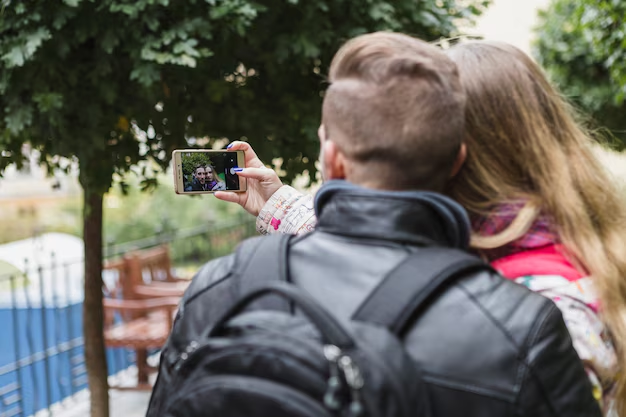Unlocking the Secret: Effortlessly Transfer Photos from Your Camera to Your Computer 📸💻
In today's digital age, capturing life's moments has never been easier. With cameras more capable than ever, it's crucial to understand how to efficiently transfer those precious photos from your camera to your computer. Not only does this ensure your memories are safely backed up, but it also enables you to edit, share, and preserve your images with ease. Below, we'll demystify the entire process in a reader-friendly guide, incorporating practical tips and solutions.
Why Transferring Photos Matters
Transferring your photos to a computer guarantees more than just backup security. It opens the door to a world of benefits:
- Editing Capabilities: Once on your computer, your photos can be enhanced with professional editing tools.
- Organizational Ease: Sorting photos into folders by date or occasion helps maintain a tidy digital photo library.
- Space Management: Freeing up space on your camera allows for more memories to be captured.
Preparing for the Transfer
Essential Tools 🛠️
Before diving in, gather your equipment and understand what's necessary:
- USB Cable or Card Reader: The simplest and most direct method of connecting your camera to your computer.
- Camera Software: Some cameras come with proprietary software to facilitate photo transfer.
- Backup Storage: Consider an external hard drive or cloud service for additional storage options.
Checking Compatibility 🔍
Ensure compatibility between your camera, computer, and any additional software or hardware:
- Ports and Connections: Verify that your camera and computer have the necessary ports for a seamless connection.
- Software Requirements: Ensure your computer meets the specifications of any camera software you plan to use.
Step-by-Step Guide to Photo Transfer
Using a USB Cable 🔌
- Connect the USB Cable: Plug one end into your camera and the other into your computer.
- Power On Your Camera: Ensure your camera is turned on; this might automatically open a transfer wizard on your computer.
- Follow On-Screen Instructions: Typically, your computer will prompt you with options like "Import Pictures"—follow these steps to transfer files.
Utilizing a Card Reader 💾
- Eject the Memory Card: Remove the card from your camera safely.
- Insert the Card into the Reader: Connect the card reader to your computer.
- Access Files: Open your computer's file browser, locate the card, and manually copy files to your desired location.
Leveraging Camera Software 💻
- Install the Software: Follow installation instructions for your camera's specific software.
- Connect Camera to Computer: Use a USB cable to link your devices.
- Transfer the Photos: Let the software guide the transfer process, often providing organizational features as well.
Overcoming Common Obstacles
Troubleshooting Connection Issues
- Check Connections: Ensure all cables are firmly attached. Try different USB ports if issues persist.
- Restart Devices: A simple reboot of your camera or computer can resolve unexplained problems.
- Update Software/Drivers: Outdated software or drivers can interfere with connections. Ensure everything is up-to-date.
Handling Large File Transfers
- Patience is Key: Large transfers can take time. Consider transferring in smaller batches.
- Compression: Compress files if necessary to facilitate smoother transfers.
Post-Transfer Tips
Organizing Your Photos 📂
- Create Folders: Use a consistent naming scheme (e.g., "2023_Christmas") to easily find events.
- Tagging and Metadata: Add tags or metadata for enhanced searchability.
- Regular Backups: Use an external drive or cloud service to safeguard against unexpected data loss.
Editing and Sharing
- Editing Software: Explore tools like Adobe Lightroom for comprehensive editing capabilities.
- Social Sharing: Easily share your photos on social media platforms directly from your computer.
Automating Future Transfers ⚙️
- Set Up Auto-Uploads: Use software that automatically uploads new photos when connected.
- Cloud Integration: Sync your camera directly with a cloud service to keep everything accessible and up-to-date.
Visually Summarized Tips: Quick-Glance Reference 📊
Here's a handy table to summarize key tips:
| Task | Action | Emoji |
|---|---|---|
| Preparing for Transfer | Gather USB cables, card readers, check compatibility | 🔄 |
| USB Transfer Process | Connect, power on, follow instructions | 🔌 |
| Card Reader Usage | Eject card, insert into reader, manual file access | 💾 |
| Troubleshooting | Check connections, restart devices, update software | 🛠️ |
| Organizing Photos | Create folders, add tags, back up regularly | 📂 |
| Editing Options | Explore tools like Lightroom | ✂️ |
| Automating Transfers | Set up auto-uploads, sync with cloud | ⚙️ |
By unraveling the photo transfer process, you're now equipped to manage and preserve your precious memories with confidence. Whether you're a professional photographer or a hobbyist, understanding the seamless transition from camera to computer ensures your images are not only secure but also ready to be admired, edited, and shared with the world. Remember, capturing the moment is just the beginning—how you manage those moments sets the stage for lasting enjoyment.

Related Topics
- How Can I Transfer Contacts To My New Phone
- How Can I Transfer Music From My Ipod To Computer
- How Can I Transfer My Contacts To Another Phone
- How Can I Transfer Photos From Camera To Computer
- How Can You Transfer Text Messages To a New Phone
- How Do I Transfer Apps To My New Phone
- How Do I Transfer Contacts From One Phone To Another
- How Do I Transfer My Contacts To Another Phone
- How Do I Transfer My Contacts To My New Phone
- How Do I Transfer Phone Contacts To New Phone